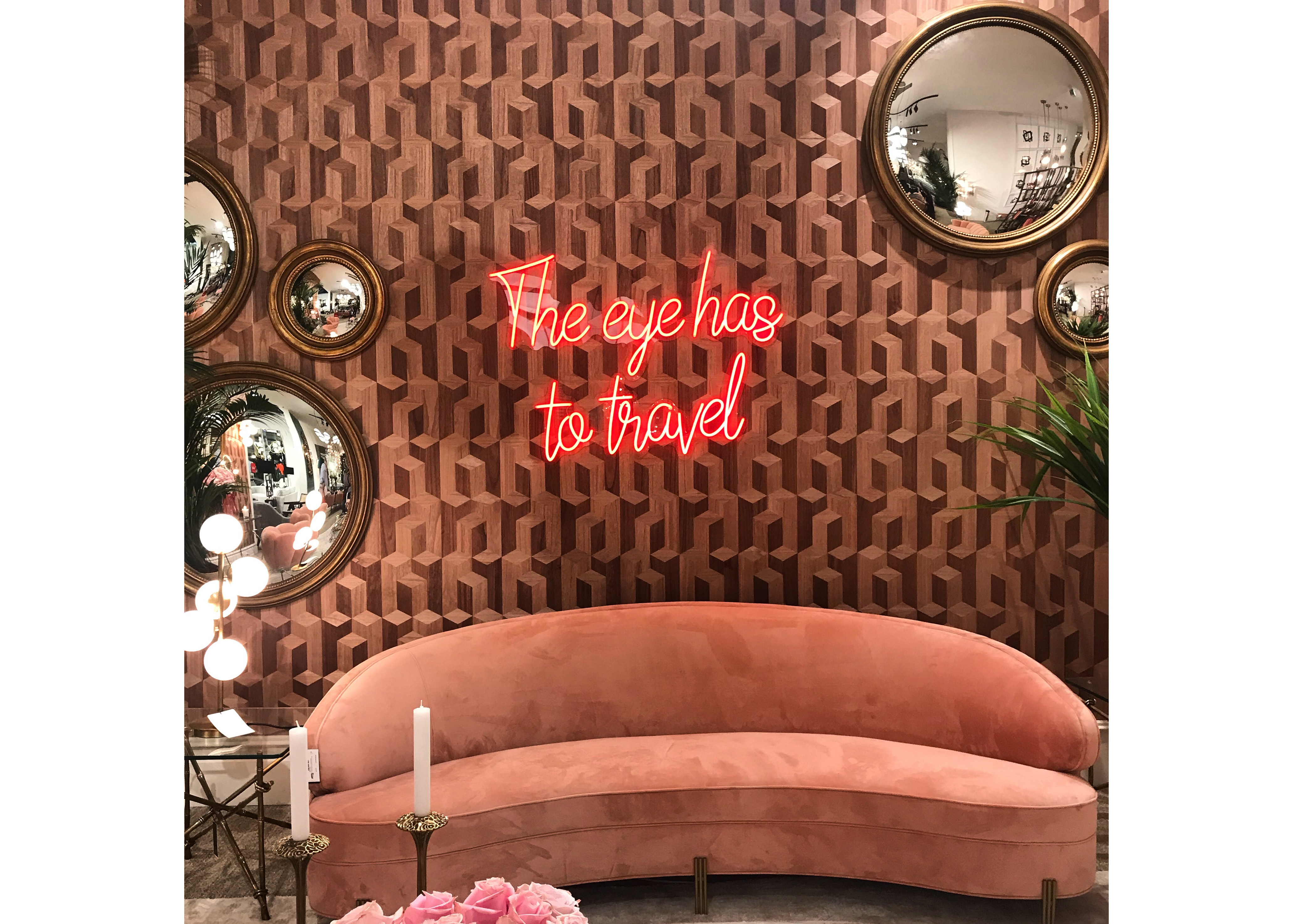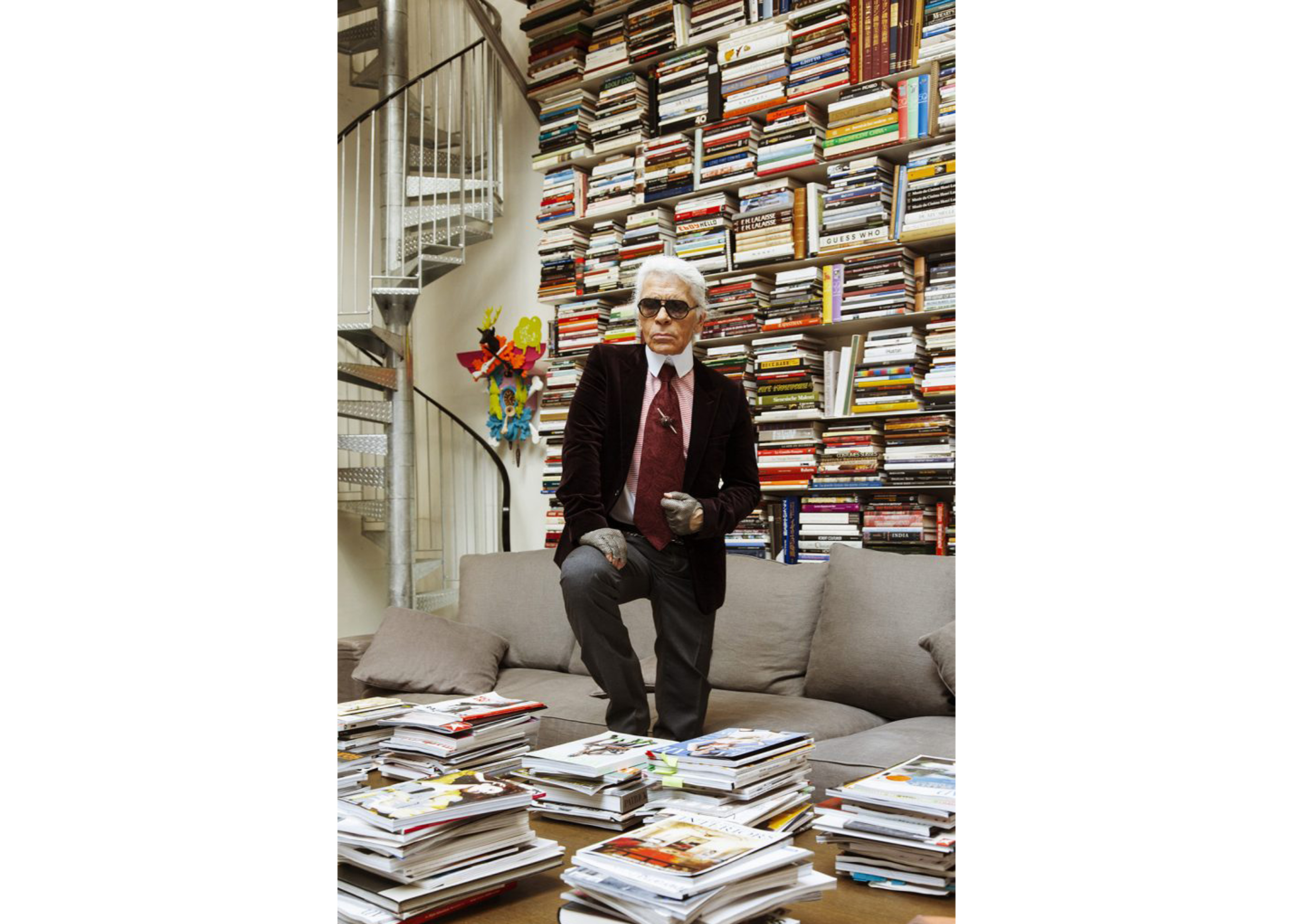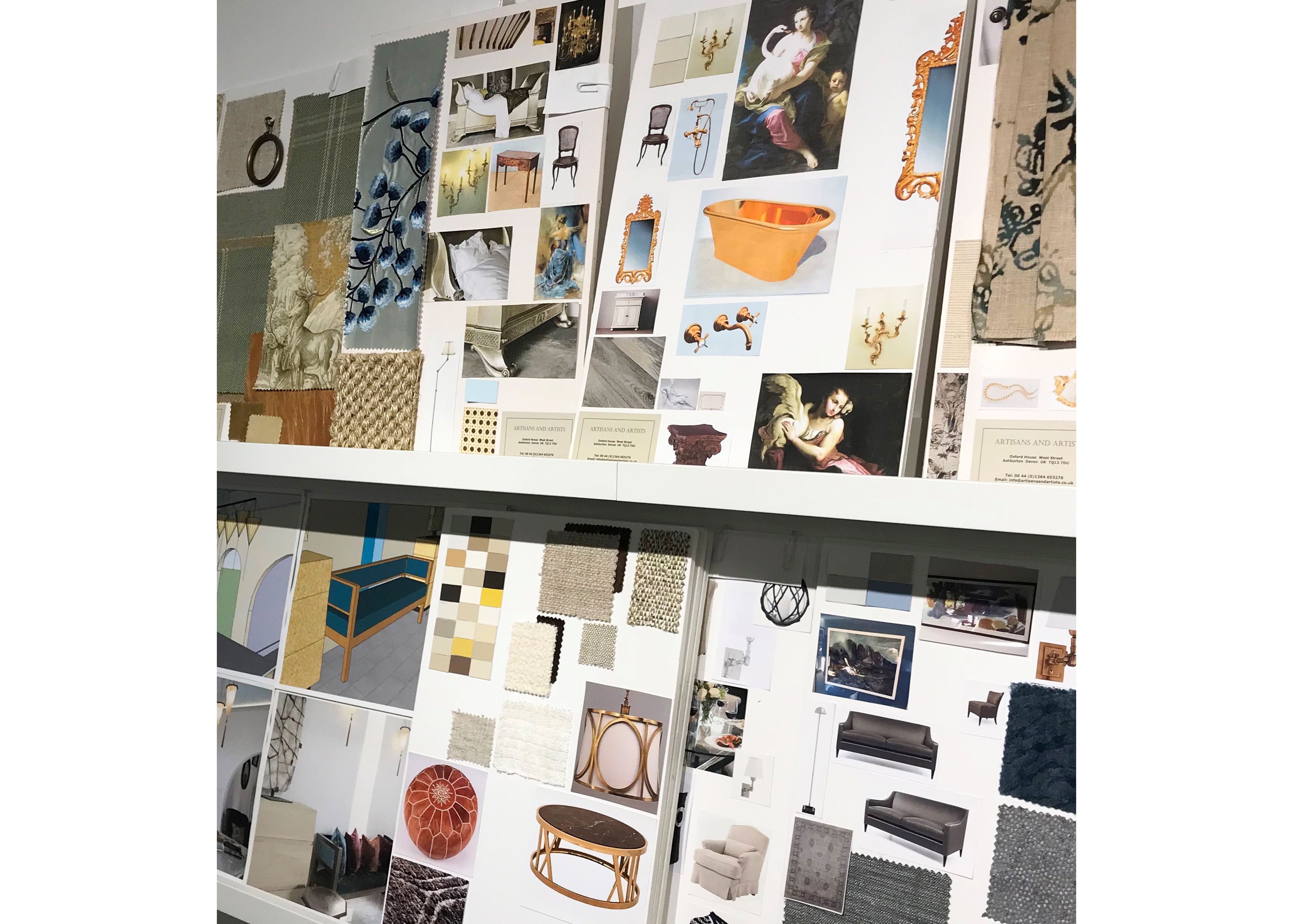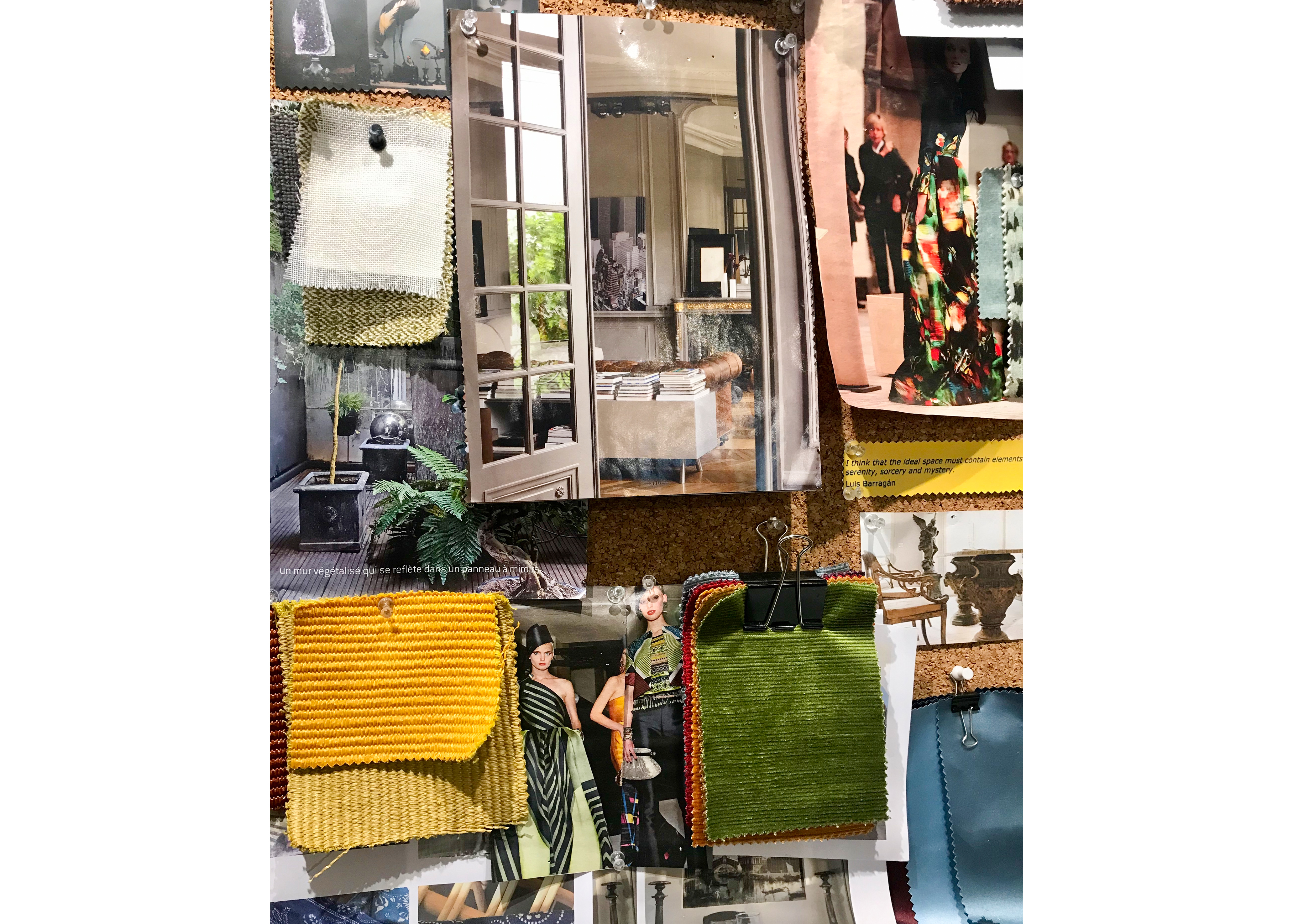ARTISAN ABODE BLOG | ISSUE 002 | 12/12/19 | 4 Minute Read
Susan Folwell of Design Studio Artisans and Artists and Artisan Abode talks about design and colour inspiration for interiors.

“The eye has to travel.” – Diana Vreeland
The Eye Has To Travel
The adroit expression coined by Diana Vreeland, “The eye has to travel.”, certainly applies to inspiration for interior design projects.
Every designer has their own way of seeking and finding inspiration, it is not a “one size fits all” scenario. I will share with you here some of the approaches that we take in the design studio at Artisans and Artists, whether we are developing design schemes for clients or for collections of furnishings for Artisan Abode our showroom and online offering.

“Books are a hard-bound drug with no danger of an overdose. I am a happy victim of books.” Karl Largerfeld in his beloved library. Photo credit: The Selby.
Armchair Travel and Surfing
Whenever I am travelling, for work or leisure, my mind is filling up with ideas, colours, patterns, concepts and vibes. A good number of these are parked and used at some point in the future when the right opportunity arises. They are rarely used literally, they are tweaked, re-arranged, morphed and spun into something new and relevant to the work at hand.
Travel is not always possible at every moment inspiration is sought so a good amount of armchair travel through my library is always a good starting point. I can often be found going from studio to home and back with a mini library of books that are going to be useful for the work at hand. These are not necessarily only interior design books.

Left to right: Mark Rothko, Untitled, 1949. Iris Van Herpen SS 2019. Casa Pedregal by Luis Barragan (image via Jorge Diego Etienne).
What Colour Do You Dream In?
I find that art books can be a great source of inspiration, especially for colour, artists combine colour so well and often in unexpected ways. Favourites include Rothko, Picasso, Gerhard Richter, Ellsworth Kelly, Matisse and Klee. Certain architects are also a great source of inspiration for their use of space and colour, a firm favourite of mine is the work of Luis Barragan. Street art and graffiti can also provide great sources of colour inspiration.
Books about textiles, pattern and how different cultures use colour are always inspiring.
The world of fashion design provides inspiring colour and pattern combinations. Armani, Etro, Valentino, Dolce and Gabbana and the genius Iris Van Herpen are some of my go to favourites for colour and pattern inspiration.
Another great source of inspiration of course is the internet, Instagram being a terrific resource, as is Google images.

Client as muse and property as inspiration in this kitchen project designed and installed by Artisans and Artists.
Client As Muse and What’s The Big Idea?
For me this is the touchstone, the client and their property are key to unlocking the door to inspiration.
Imagining the client and their family living in the space, understanding how they wish to live, their dreams and aspirations and their likes and dislikes are paramount. Imagining the client inhabiting the space day to day and their reaction to certain colours, textures and pattern is often a great springboard to the “big idea”.
When working on an historic house I find that visits to National Trust properties or stately homes of a similar age can be inspiring, not so much for a carbon copy of an historic interior (who wants to live in a museum) but there will undoubtedly be some small gem of an idea that will emerge from such visits (the kitchens are always a fascination for example), the same goes for visiting museums and galleries.
Contemporary homes, such as modern coastal or urban properties, require certain considerations, I find that carefully reviewing the surrounding landscape can be very inspiring. What are the predominant colours, what is the light like, is it a windy site? Answering these questions and many more is not only vital to developing a viable scheme but is often the creative springboard to a design idea.

Practicality was a driver for this design by Artisans and Artists for a guest bathroom without any natural light. Use of colour and iridescent finishes plus moody lighting and reclaimed timber gives this space personality and ambiance.
A Few Practicalities – As Few as Possible
At the initial stages of thinking about a design idea or a colour combination we do not want to be too concerned with practicalities, at the concept development stage we think of nothing but the practicalities but when considering the initial idea I think it is important to have a very open mind. The chosen concept is finessed later to cater for any and all practical requirements.
However, necessity can truly be the mother of invention so giving brief consideration at this early stage to some key practical matters can help the creative process. Things to consider include who will use the space, is storage important, what natural light does the space have (or not) and is it north, south, east or west light, what to keep and what should go.
i) Storage – does this particular design scheme require storage? Kitchens, bathrooms and dressing rooms, for example, will have precise storage requirements which need to be considered, how visible or invisible that storage is can provide a creative springboard for a design idea such as hidden doors to cupboards.
ii) Who will use the space? This may influence colour and material choices, for example if children or pets will be frequent inhabitants of a particular space careful consideration will need to be given to colours and fabrics.
iii) How much natural light does the space enjoy? If there are vast areas of glazing with strong natural light careful consideration will need to be given to how the space is made comfortable and how the light may need to be filtered. If a space does not have much, or any, natural light the colours need careful consideration. As counterintuitive as it may sound, a space with little natural light may not benefit from a pale colour scheme, strong saturated colour and definite contrast may well help the space achieve a pleasing atmosphere.
iv) What to keep and what should go? Are there any furnishings in the space which need to be kept and re-used in the new scheme? What are we working out from? For example, a favourite rug or painting may provide a helpful springboard for a new scheme.

Let your imagination be your guide. A Cobra Art picture, captured by Susan Folwell when travelling in Paris.
Be Brave and Experiment
“The best thing to do is dive with your imagination. You can never drown yourself.”, another great truism from the late great Karl Largerfeld, this applies to interior design concept development completely.

Mood boards in the Artisans and Artists studio.
Live with The Idea for a While
Once we have settled on an idea in the design studio, we discuss it, consider it, mock it up as a preliminary mood board (more about this in a later blog) and we live with it for a while. We review this first stage of the concept in the studio and the home in question, at different times of the day (and night), see how it looks and feels in different light. We then begin to consider the all-important practicalities of implementation, cost and robustness (or as we say “fit for purpose”).

Visualising ideas in the Artisans and Artists studio.
Pulling It All Together
In our next blog we are sharing tips and hints about how to visualise design ideas …
Copyright © 2019 Artisans and Artists Limited





































